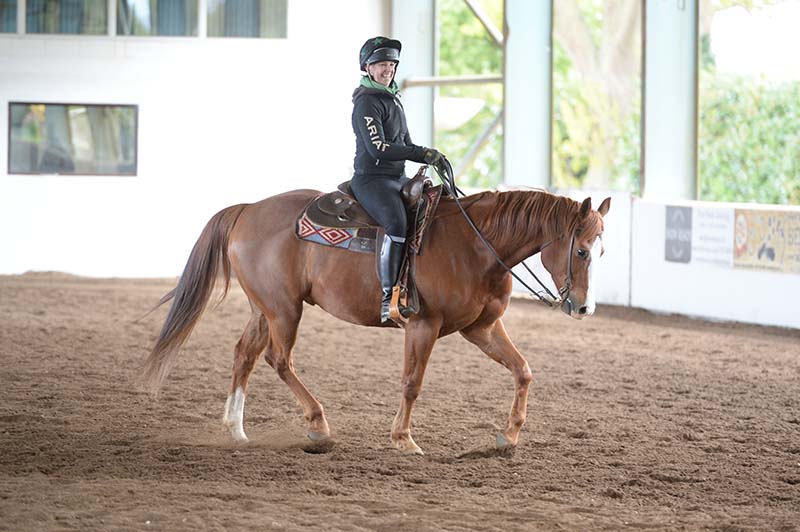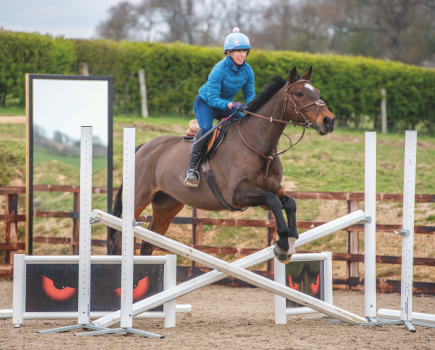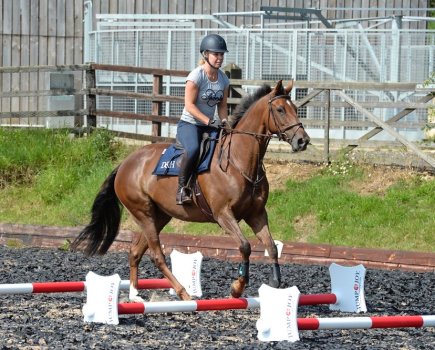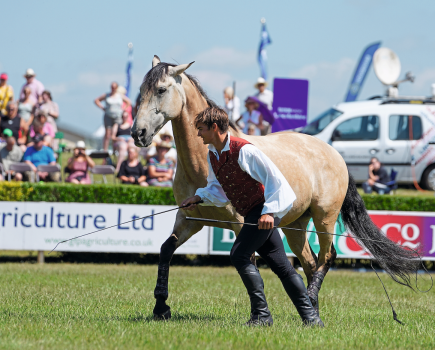Western horse riding is more than just a pair of jeans, cowboy boots and a Stetson. It has an intrinsic skill set all of its own. It is a popular style of riding in the USA, whereas it is still a niche market in the UK, but a growing one as horse owners look to try something new and different with their horses that is a discipline in its own right.
Appreciated for a history of practicality and purpose, there are many benefits that the influence of Western can bring to both the horse and rider who are more accustomed to English style. A closer look at the style of Western horse riding reveals a technique that encourages an independent seat, soft hands and clear yet subtle communication with your horse — all things we strive to achieve as riders whether we enjoy hacking a horse, jumping, dressage or something else.
What is Western horse riding?
Western horse riding is an umbrella term that encompasses the activities and distinguished disciplines that originated in the far west of the USA, with an accompanying style of tack. Yet at the very heart, all techniques and movements are derived from life on the ranch.
Western horse riding is about doing less with your hands and more with your seat. With origins dating back to the 1700s, at the time horses first began to be of use to both indigenous Americans and European settlers, the progression of Western horse riding was one of high practical value to meet the needs of those who spent their life working cattle from horseback.
The later appearance of the Spanish Conquistadors gave rise to the refined arts of the vaqueros (cowboys), buckaroos and Grey Basin cowboys that have contributed to the evolution of what it means to ride Western, and to the tradition of horsemanship itself.
What is Western Horsemanship?
Horsemanship is a familiar adjective that is commonly used alongside Western horse riding. Though the general terminology defines it as ‘the art of riding and handling horses’, I feel the meaning of horsemanship goes a little deeper than that. For me personally, horsemanship is not just an application but a philosophy; a way of thinking and a way of feeling.
To develop your own horsemanship is to develop your skill and your communication, but mainly your awareness of self. If you embrace this it will begin to improve other aspects of your life just as it will improve the relationship with each horse with whom you come into contact. Horsemanship is not what you do, but how you do it.
The training of a Western horse for riding varies both in ridden refinement and ideology to that of their European counterparts. It has many biomechanical and psychological benefits as a result of that training. Before a saddle is ever presented, time is spent on the ground to lay educational foundations to aid in preparation of the horse aside from lunging and long-reining.
This helps to ease the transition and ready the horse physically and emotionally, making the addition of the rider a smoother transition. It is the reason why many Western horses are so calm.
Western horse riding will…
- Teach the rider to have an independent seat.
- Allow the horse to move freely and naturally under saddle.
- Teach a horse to listen and respond to the lightest of aids.
- Teach you, the rider, to use and apply your weight as an aid.
- Work on the rider’s balance.
- Free a hand for useful jobs such as opening gates.
- Help you be a better horseman.
Each of these are hugely beneficial and vital skills to hone in the English style of horse riding too.
Head carriage in Western horse riding
Aside from tack, the most notable way of identifying a Western horse is through its carriage, specifically the position of the horse’s head. Their poll is just above or below the wither, with the nose slightly in front of the vertical. I feel that riding behind the vertical in any discipline is a considerable welfare issue that causes lasting damage to the horse.
For many horses, the Western horse riding position comes naturally to them and promotes unrestricted movement. It also allows them to use their body and balance correctly. The element of freedom given by this type of training is highly beneficial out on back country trails where the horse is encouraged to think through situations and negotiate ever-changing terrain. This naturally develops confidence, spatial awareness and proprioception (this is, awareness of how they are using their body and where their feet are).
Split reins and a loose contact
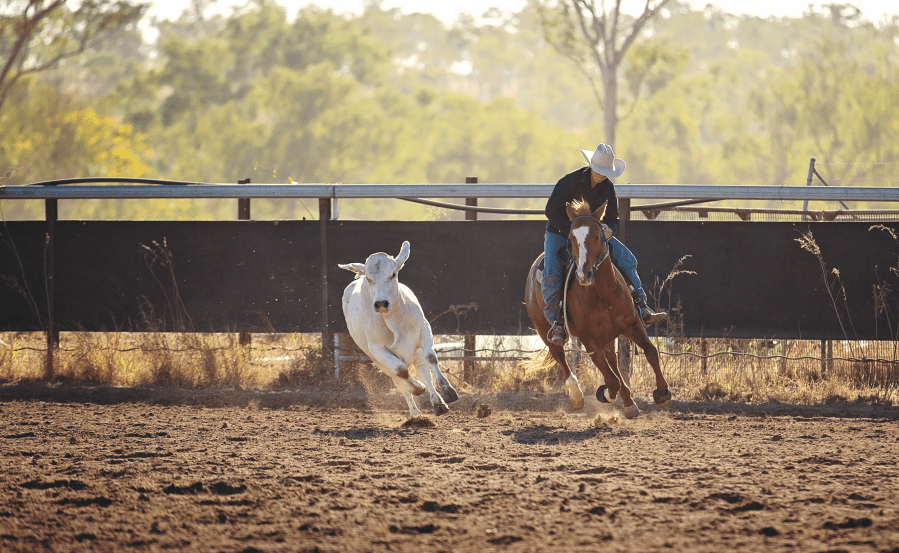
The foundation of Western style is rounding up cattle in the USA
The trained movements of the Western horse complement their calm nature and are at a steadier pace. This allows the rider to concentrate on working on their own balance and independence of seat. Due to the lack of a direct contact with the horse’s mouth (ie a longer rein) there is nothing for the rider to hang on to with their hands.
The reins are split in Western horse riding. They are held with obvious slack between the bridle and the rider’s hands. A bridged rein is held either in two hands or each rein is held in one hand. Correct style is primarily one-handed with the reins typically carried in the left hand to free up the right hand, which is the most commonly dominant hand.
Holding the reins in this way allows the freedom for practical situations such as opening gates and roping cattle. It doesn’t mean there is no use of contact. A horse can feel a change in the rein even with slack. It just means that the contact is used as a means of communication to refine a cue, and not to hold the horse in place on a particular outline.
A well-trained horse used for Western riding is also accustomed to neck-reining. This is the application of rein contact against the base of the horse’s neck to yield to the opposite direction. This is done in unison with the rider’s seat and frees up the hand.
Western horse riding: learn the gaits
The gaits in Western horse riding are known as the walk, jog and lope. Though the beat and gait is the same, the pace is steadier. The two-beat gait is a slower movement than the trot, before moving up a transition to the lope with a feeling much like that of being on a rocking horse.
Individual disciplines within Western horse riding — such as cutting, pleasure, ranch, rodeo, reining and trail riding — each have their own style for the ring, creating variation in the ridden education of the horse. For example, the lope of a horse competing in a Western pleasure class covers less ground than a ranch horse, where the canter is extended and will cover more ground.
Movements developed on the ranch were never meant for competitive judgment. The origins of each discipline have foundations in the practical element that would have been asked of the horse in the real world.
Western horse riding: communicating by seat
All ridden horses, regardless of education, have a rider’s seat as their primary point of contact. This is a vital aspect of communication yet I find it is so often overlooked by riders in favour of the overuse of arms and legs. Work on ranches requires a horse to be finely tuned to the movements of the rider, the weight distribution of their pelvis, and in turn the complimentary movement of their legs to allow a soft and quick response when faced with a rogue cow.
Using your seat effectively requires the following:
- The rider must keep balanced with the horse’s movements when asking for forward movement, stopping and direction, as in any discipline.
- You must also be looking towards the point of travel.
- When the turn approaches, looking in the direction of travel allows your shoulders and torso to rotate in unison.
- With Western horse riding, you then open the inside leg and close the outside leg to follow the turning movement, like opening and closing a door.
- Having your weight lightly on the seat bone towards the direction of travel is a natural consequence of the body working in unison.
Classical equitation
When applied and taught correctly, the core of training the Western horse in the style of the vaquero echoes that of classical equitation in relation to lateral manoeuvres and body control after being introduced from European countries such as Spain, France and Portugal.
As a result, riders in the far west had been applying lateral movements to their horses long before dressage appeared as an Olympic sport in the early 1900s, as these movements came in useful for working cattle. When we add lateral movements such as shoulder-in, leg-yield or half-pass to our riding, we work on our horse’s suppleness and straightness in unison. This benefits the horse physically.
Doing so engages aspects of their body that contribute to a longer-lasting ridden career and a level of manoeuvrability to dodge or direct the sometimes unpredictable movements of a cow.
Think less and feel more
At the very heart of Western horse riding is the practicality of life on the ranch and fulfilment of getting the job done in unison with your companion, the horse. It was not about rosettes and ribbons, but being the best horseman you could be. Just like Yin and Yang, there are good methods and good ways of riding, and there are bad methods and bad ways of riding. Benefits can be found throughout the eclectic range of styles, methods and disciplines the world has to offer.
Putting aside the stereotypes, Western horse riding can teach you the value of movements steeped in history, build confidence in your ridden independence and trust that communication is key. Think less and feel more. That is Western Horsemanship — and your horse will thank you!
Main image: copyright Your Horse Library/Kelsey Media Ltd; inset: copyright Shutterstock

